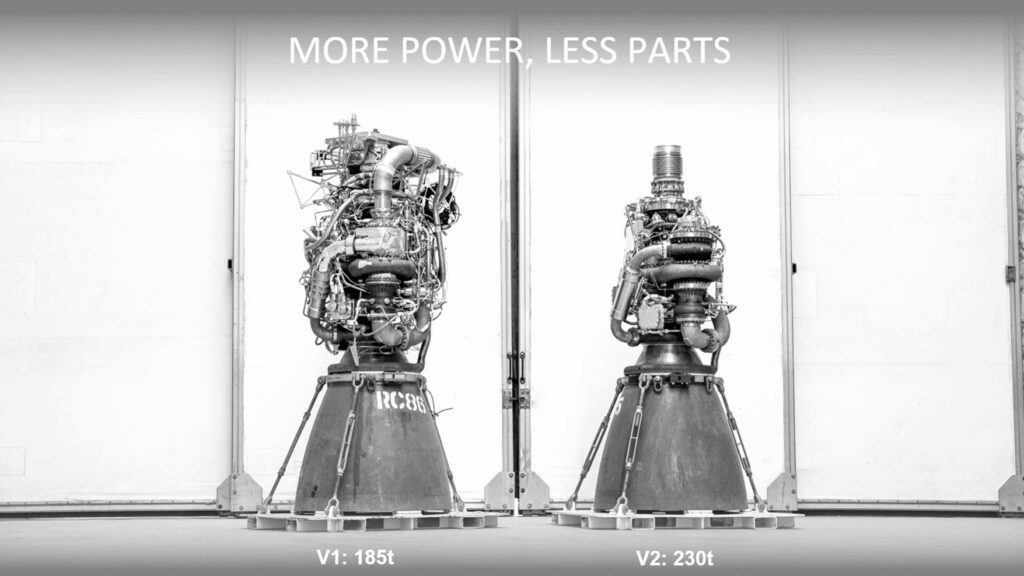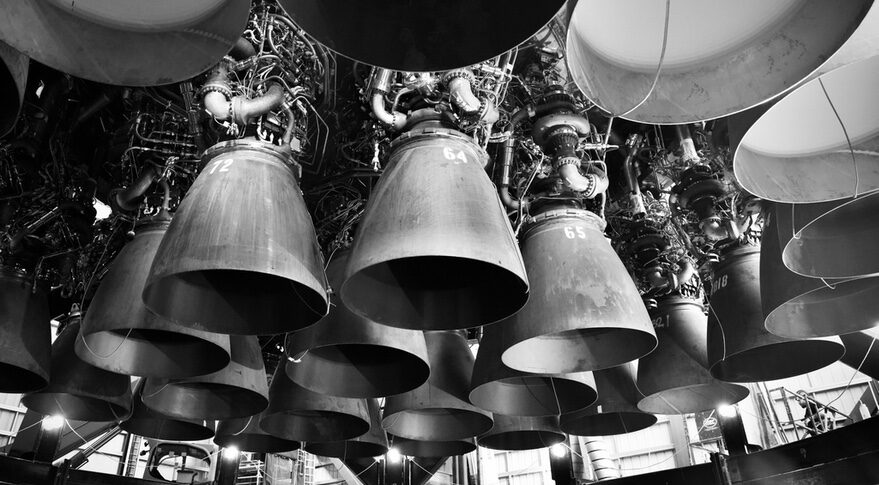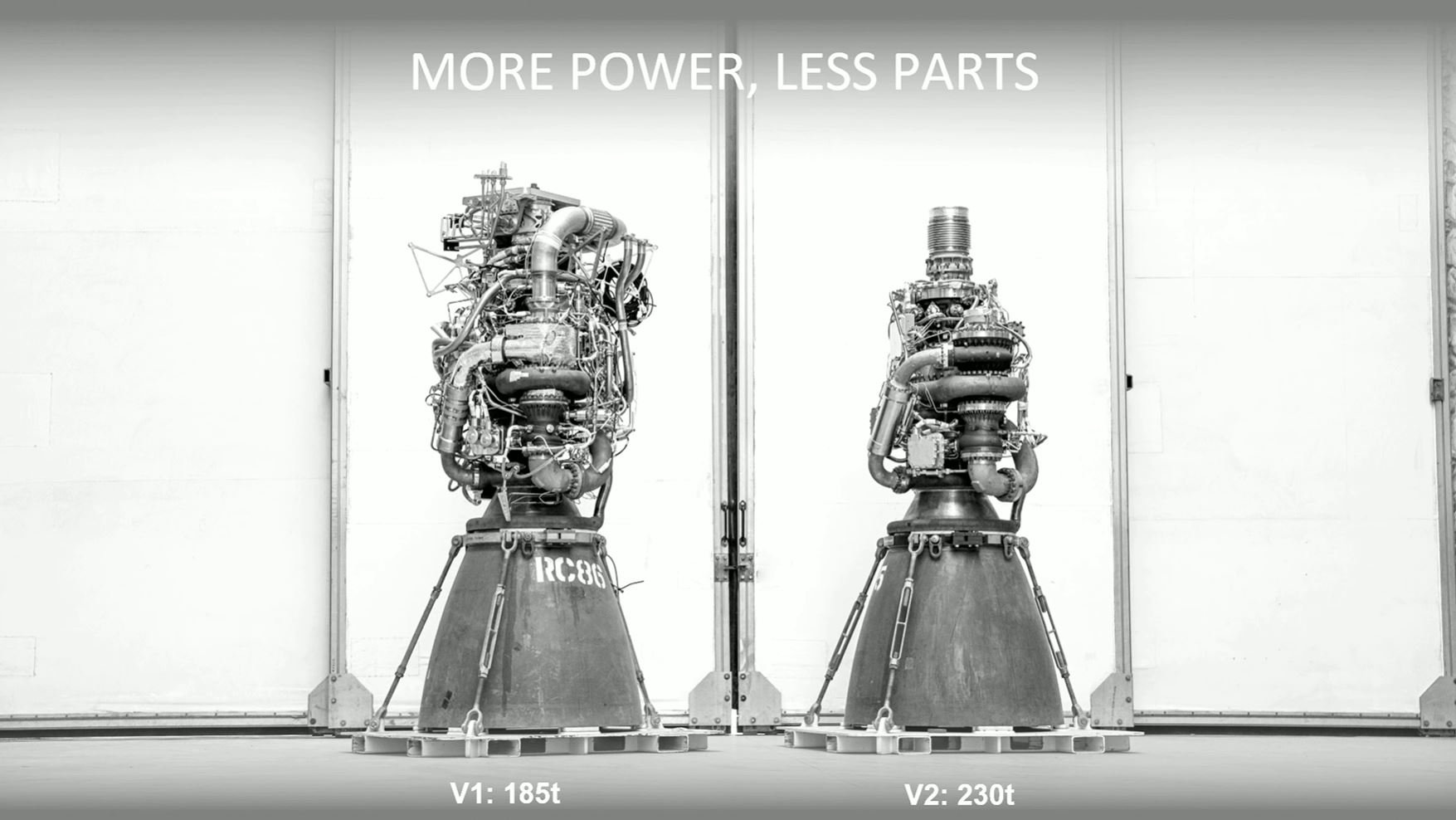
Updated Comparison Between SpaceX’s Raptor V1 & Raptor V2
Over the past few years, SpaceX has been developing Starship at a speed that is hard to keep up with. One of the major components of Starship and any launch vehicle are the engines. In this case, SpaceX has been working to develop, manufacture, and improve the Raptor engine. By now SpaceX has made a lot of progress on the next-generation rocket engine.
Thanks to continued updates such as the most recent Starship presentation, we have even more information on some of the updates SpaceX has made to Raptor V2. This includes the power, cost, efficiency, manufacturing process, and much more. All of which play a vital role and will be key considering future Starship models are expected to have close to 40 Raptors on a single launch vehicle.
A rocket engine is an immensely complex piece of equipment. Not only is it complex but they play a necessary role in any rocket launch. SpaceX has managed to make very impressive progress on Raptor and showcase the improvements over time. However, this process has not been without multiple hiccups throughout the process. Here I will highlight some of the impressive upgrades SpaceX has made along with some of the challenges they have and continue to face.
Raptor Improvements

The Raptor engine has managed to become a marvel of technology throughout years of development with no plan of stopping. Close to 6 years ago, one of the first Raptor engines was manufactured by SpaceX and shipped to McGregor Texas for development testing. Over this same time period, there have been a few specific features and challenges that SpaceX focused on. This includes the power, cost, efficiency, and time to manufacture. Raptor V2 is the newest version of Raptor, and is a complete redesign of the version 1 Raptor engine. The turbomachinery, chamber nozzle, and electronics were all redesigned, as well as deleting some parts and converting many flanges to welds. All of which are very important factors for not only the success of the engine, but Starship as well. The first major difference between Raptor V1 and V2 is power. Back in July of 2021, Musk tweeted saying, “Raptor V2.0 is a major improvement in simplification, while also increasing thrust from ~185 tons to ~230 tons. Long-term goal is engine cost below $1000/ton of thrust.” This major power increase has a direct impact on important metrics like the power of Starship and its weight capabilities to different orbits and destinations. Even more recently, during the Starship presentation, Musk highlighted that the current value for Raptor V2’s power was around 230 tons of thrust and that he was confident they could improve it to 250 tons. Going from an initial thrust of 185 tons to 250 is a very significant improvement with many different benefits.
The next major improvement revolves around the design. Raptor V1 stands out and is visually very different from V2. When I mentioned improvements to design I am referring to the plumbing and general electronics, piping, etc. that envelops the top section of the engine. This excess of material and parts have a direct negative effect on multiple factors including engine efficiency, production time, cost, and more. This is exactly why SpaceX is working to change that on its second version of the Raptor engine. In an interview a while back, Elon Musk mentioned that the next version of the Raptor engine will have a significantly cleaned-up top section. He was referring to a large number of components responsible for operating the engine. While it sounds simple this is no easy task but would carry over a lot of different benefits. More recently, during the Starship presentation, they showed a photo of both engines next to each other and even had two Raptor versions side by side in the background. On Raptor V1 you can see a labyrinth of plumbing and parts surrounding the entire engine in a very complex design. Musk mentioned that V1 looks kinda like a “Christmas tree, spaghetti pile”, “while V2 is greatly simplified, while also increasing thrust at the same time.” In this side-by-side comparison, it becomes very clear the major improvements made. This simplification not only improves the efficiency of the engine, but also helps SpaceX with the cost and time to produce Raptor V2.
This leads to the final big improvements I want to mention related to cost and production time. In 2019, Musk tweeted saying, “Raptor cost is tracking to well under $1M for V1.0. Goal is <$250k for V2.0 is a 250 ton thrust-optimized engine, ie <$1000/ton”. It seems recently that SpaceX has made a lot of good progress towards this ambitious goal. Once again at the most recent Starship presentation, when talking about Raptor V2 progress Musk highlighted that V2 costs about half as much as V1 even though it’s much more powerful. This is thanks to the simplification that I mentioned prior among other things. This also has had a direct result on how long it takes SpaceX to manufacture these engines. With future Starship models needing close to 40 Raptor engines per, SpaceX needs to master the production and manufacturing process for Raptor engines. What used to cost more money and take significantly longer, has now improved on the upgraded Raptor V2. Elon pointed out that SpaceX was continuing to improve with Raptor production and he was confident within a short period of time the company could produce a Raptor V2 every day, or 7 a week. At the time being, they are very close to this goal of a new Raptor V2 every day.
Raptor V2 Challenges

Now that I have highlighted some of the major improvements made to Raptor V2, we can take a look at some of the challenges SpaceX is facing. The first has to do with production. While I just pointed out SpaceX’s impressive progress and ambitious goals regarding production, they still have a lot of work ahead of them. Late last year, there was a lot of talk regarding SpaceX’s problem with producing a significant amount of Raptor V2s. By now a lot of those issues have been sorted and SpaceX is progressing in this process. However, the company will need to continue improving in order to facilitate future launches of many Starship launch vehicles. The last issue I want to point out was mentioned in the recent Starship presentation. Musk talked about the Raptor 2’s progress along with some complications with overheating. The engine is extremely powerful and SpaceX is working to keep the engine cool during long and violent engine burns. This issue is crucial for SpaceX to fix which will likely be the result in a short period of time.
Conclusion
Over the past few years, we have seen SpaceX’s Raptor engine evolve. It has managed to become more powerful, efficient, cost-effective, and easier to produce. All of which play a vital role in the future of the Starship program and much more. Most recently SpaceX and Musk showed off the improvements to Raptor V2. There is a very noticeable visible difference between the two. While SpaceX is still working on a few complications, they have made immense progress. We will have to wait and see how they continue to develop the engine and the impact it has on the future of the space industry.
